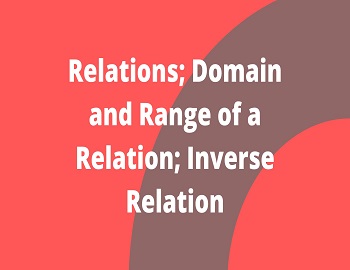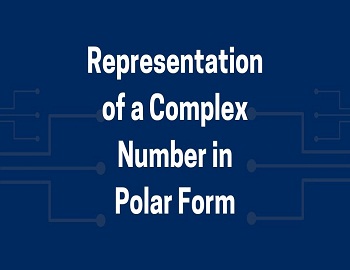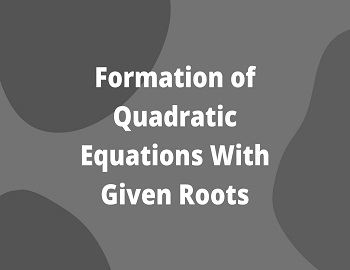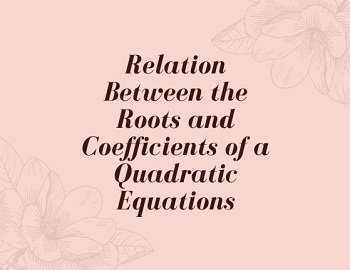Table of Contents
What are Relations in Math?
Consider two sets A and B such that A contains a few countries of the world, namely India, Japan, Pakistan, Thailand and France and set B contains their capitals. Thus,
| A = {India, Japan, Pakistan, Thailand, France}, B = {New Delhi, Tokya, Islamabad, Bangkok, Paris} |
Writing R for the relation ‘is the capital of’ the statement that Tokyo is the capital of Japan can be represented as ‘Tokyo R Japan’. Similarly, New Delhi R India ⇒ New Delhi is the capital of India. Now, omitting the letter R between the pairs of the names one can write them as ordered pairs like (Tokyo, Japan) etc., and the relationship can be written as a set R of ordered pairs. Thus,
| R = {(New Delhi, India), (Tokyo, Japan), (Islamabad, Pakistan), (Bangkok, Thailand), (Paris, France)} |
| Obviously, R ⊆ (B x A) Now consider the relation ‘is brother of’ and the sets, A = {Laxman, Sugriv} and B = {Ram, Bali}, then R = {(Laxman, Ram), (Sugriv, Bali)} Here, R ⊆ (A x B). |
Thus, if A and B be two sets, then a relation R from A to B is a subset of A x B i.e., R is a relation from A to B ⇔ R ⊆ A x B.

Domain and Range of a Relation:
Let R be a relation from a set A to a set B. Then, the set of all the first entries of the ordered pairs belonging to R is called the domain of R and the set consisting of all the second entries of the ordered pairs in R is known as the range of R. The set B in this case is known as the codomain of R.
| Clearly, range ⊆ codomain Thus, Domain (R) = {a: (a, b) ∈ R} and Range (R) = {b: (a, b) ∈ R} |
| Let A = {2, 4, 6, 8} and B = {1, 3, 5, 7} and R = (2, 3), (4, 5), (6, 7) Then, Domain (R) = {2, 4, 6} Range (R) = {3, 5, 7} and codomain (R) = {1, 3, 5, 7} |
Consider a non-empty set A. Then, a subset of A x A is also a relation from A to itself and is known as a relation on set A.
| Let A = {1, 2, 3, 4} Then, R = {(1, 3), (2, 2), (3, 4)} is a relation on set A. |
Inverse Relation:
If A and B be two non-empty sets and R be a relation from set A to set B then the inverse of R denoted by R-1, is a relation from set B to set A and is given as-
| R-1 = {(b, a): (a, b) ∈ R} |
| The Domain of R-1 = Range of R and Range of R-1 = Domain of R. |
| (1) A relation R defined from set A = {2, 3, 4, 5} to set B = {3, 6, 7, 10} as follows, (x, y) ∈ R ⇔ x is relatively prime to y. Express R is a set of ordered pairs and finds its domain and range. Solution: A = {2, 3, 4, 5} B = {3, 6, 7, 10} R ⊆ A x B and (x, y) ∈ R ⇔ x is relatively prime to y. ∴ R = {(2, 3) (2, 7) (3, 7) (3, 10) (4, 3) (4, 7) (5, 3) (5, 6) (5, 7)} Now, Domain of R = {2, 3, 4, 5} and Range of R = {3, 6, 7, 10} |
| (2) Let A be the set of the first five natural numbers and let R be a relation on A defined as (x, y) ∈ R ⇔ x ≤ y. Express R as a set of ordered pairs and find its domain and range. Solution: A = {1, 2, 3, 4, 5} A = {1, 2, 3, 4, 5} Since R is a relation on set A such that (x, y) ∈ R ⇔ x ≤ y. Now, R = {(1, 1) (1, 2) (1, 3) (1, 4) (1, 5) (2, 2) (2, 3) (2, 4) (2, 5) (3, 3) (3, 4) (3, 5) (4, 4) (4, 5) (5, 5)} Domain = {1, 2, 3, 4, 5} Range = {1, 2, 3, 4, 5} |
| (3) Find the inverse Relation R-1, in each of the following cases: (i) R is a relation from {1, 3, 5} to {2, 4} defined by x R y ⇔ x > y. Solution: Let A = {1, 3, 5} B = {2, 4} x R y ⇔ x > y, ∀ x ∈ A and y ∈ B Now, R = {(3, 2) (5, 2) (5, 4)} ∴ R-1 = {(2, 3) (2, 5) (4, 5)} (ii) R is a relation from {6, 7, 8} to {12, 16, 18} defined by x R y ⇔ x divides y. Solution: Let A = {6, 7, 8} B = {12, 16, 18} x R y ⇔ x divides y, ∀ x ∈ A and y ∈ B Now, R = {(6, 12) (6, 18) (8, 16)} ∴ R-1 = {(12, 6) (18, 6) (16, 8)} (iii) R is a relation defined as R = {(x, y): x, y ∈ N, 2x + y = 7}. Solution: R = {(3, 1) (2, 3) (1, 5)} ∴ R-1 = {(1, 3) (3, 2) (5, 1)} (iv) R = {(x, y): x, y ∈ N, x + 3y = 10}. Solution: R = {(1, 3) (4, 2) (7, 1)} ∴ R-1 = {(3, 1) (2, 4) (1, 7)} |
| (4) Find the linear relation between the components of the ordered pairs of the relation R where- (i) R = {(1, 3) (2, 5) (3, 7) (4, 9)} Solution: Let y = mx + c be the linear relation for R. Now (1, 3) ∈ R ∴ 3 = 1 (m) + c ⇒ 3 = m + c ……….(i) Also (2, 5) ∈ R ⇒ 5 = 2m + c ……….(ii) Subtract (i) from (ii): 2 = m Substitute m = 2 in (i): 3 = 2 + c ⇒ c = 1 ∴ Required linear function is y = 2x + 1 (ii) R = {(2, 1) (3, 4) (4, 7)} Solution: Let y = mx + c be the linear relation for R. Now (2, 1) ∈ R ⇒ 1 = 2m + c ……….(i) Also (3, 4) ∈ R ⇒ 4 = 3m + c ……….(ii) Subtract (i) from (ii): 3 = m Substitute m = 3 in (i): 1 = 6 + c ⇒ – c = 6 – 1 ⇒ c = -5 ∴ Required linear function is y = 3x – 5 |









Comments (No)